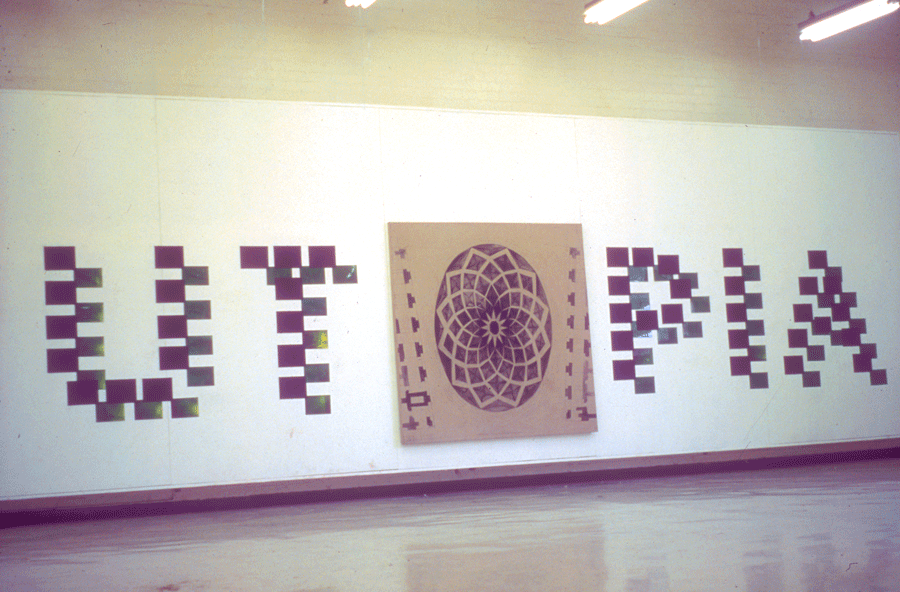Artschool
RMIT Painting Department 1992-6










Excerpt from PhD
Contingency and Infinity A Studio Investigation of Embodied Perception.
Chapter 1 Painting in the Expanded Field
I argue for a lineage of installation practice, which stems from an expanded notion of painting and a mode of thinking derived from painting, exploring issues associated with the enigma of seeing and touching in pictorial and actual space. I argue that painting may be viewed as a liminal space that implies its context beyond the frame. I look to this experience in my resulting installation practice.
I believe my art school training took place at a very specific time of transformation experienced by the visual art community in Melbourne, Australia. The 1990’s saw significant revision of postmodern practice. Key staff members at the Royal Melbourne Institute of Technology (RMIT) where I completed my undergraduate and Masters degrees in Fine Art, argued a line of thought that could be called phenomenological, although the specific term was rarely used.
In particular two art educators, Andy Thomson, recently arrived from Goldsmiths in London, and David Thomas were important figures proposing many re-evaluations. The reassessment of conceptual and installation practices from the 1960’s and 1970’s were significant influences. Key concepts from this period were the following: to question medium specificity or the appropriateness of a medium in expressing content, to focus on the experience of the viewer in the encounter with the work, to address the subject of space and the space of subjectivity, to open pictorial space to actual space, or to look at and beyond the frame and to look at vision itself as a subject. A number of important practitioners emerged from this schooling. In particular, Melbourne artists including Daniel von Sturmer, Laresa Kosloff, Natasha Johns-Messenger and Michael Graeve have produced work engaged with these ideas in diverse ways. Other messages implicitly communicated to me as an undergraduate included a focus on bodily perception, a suspicion of sentimentalism and nostalgia and an unspoken assumption that the relationship between form and content contains an element of the sublime that is resistant to articulation.
A key element in my art education was the experience of drawing and painting from life. The process of observational drawing and painting was a pivotal experience for me as a student, providing repeated moments where one intently looks at and examines, a subject, and puts aside all established knowledge on the subject for a new perception and knowledge of how to depict it. Representation can never fully embody the matrix of information felt by the perceiver in an encounter with Being. Painting from the primordial is always an abstraction, a translation in which much is lost. Nevertheless, through this process reciprocity builds between the looking, making and the viewed that is interwoven, flowing through the threshold of the eye, mind, hand and materials. Throughout this process one must unlearn what one knows about the thing(s) one is looking at. Conceptual categories are suspended in order that a more sensitive seeing may occur. ‘Seeing is forgetting the name of the thing one sees’ as artist Robert Irwin writes. See Lawrence Weschler, Seeing is Forgetting the Name of the Thing One Sees, Over thirty Years of Conversations with Robert Irwin (California :University of California Press, Expanded Edition, 2008).